Tide Pools: A Hidden World
By: Trevor Hoang
If you’ve ever heard of San Diego, the first thing you’ve probably heard about it is the amazing weather that it has. The second thing would probably be the beaches. As a local Californian, I have been to the beach more times than I can count. However, swimming and playing on the sand aren’t the only things that the beaches in San Diego have to offer. Under the surface of the water is a world teeming with life, and the best way to explore that world (without getting wet) are tide pools.
So, our team decided to pack our equipment and head to one of the tide pools near us in La Jolla, a well-known beach community in San Diego. We visited the La Jolla tide pools which are only one of the many tide pool areas in San Diego.
Now, I’ve been going on about tide pools, but what are they exactly? Tide pools are small bodies of water that are left behind on rocks during low tide. During the high tide, the rocks are covered with water allowing for many sea creatures to traverse onto the rocks. However, when the tides recede, some of the seawater and sea creatures remain stuck in some of the holes and crevices in the rocks leaving us with tide pools. Be sure to check the tide level before planning your visit as the lower the tide is, the greater the chance that you’ll see creatures.
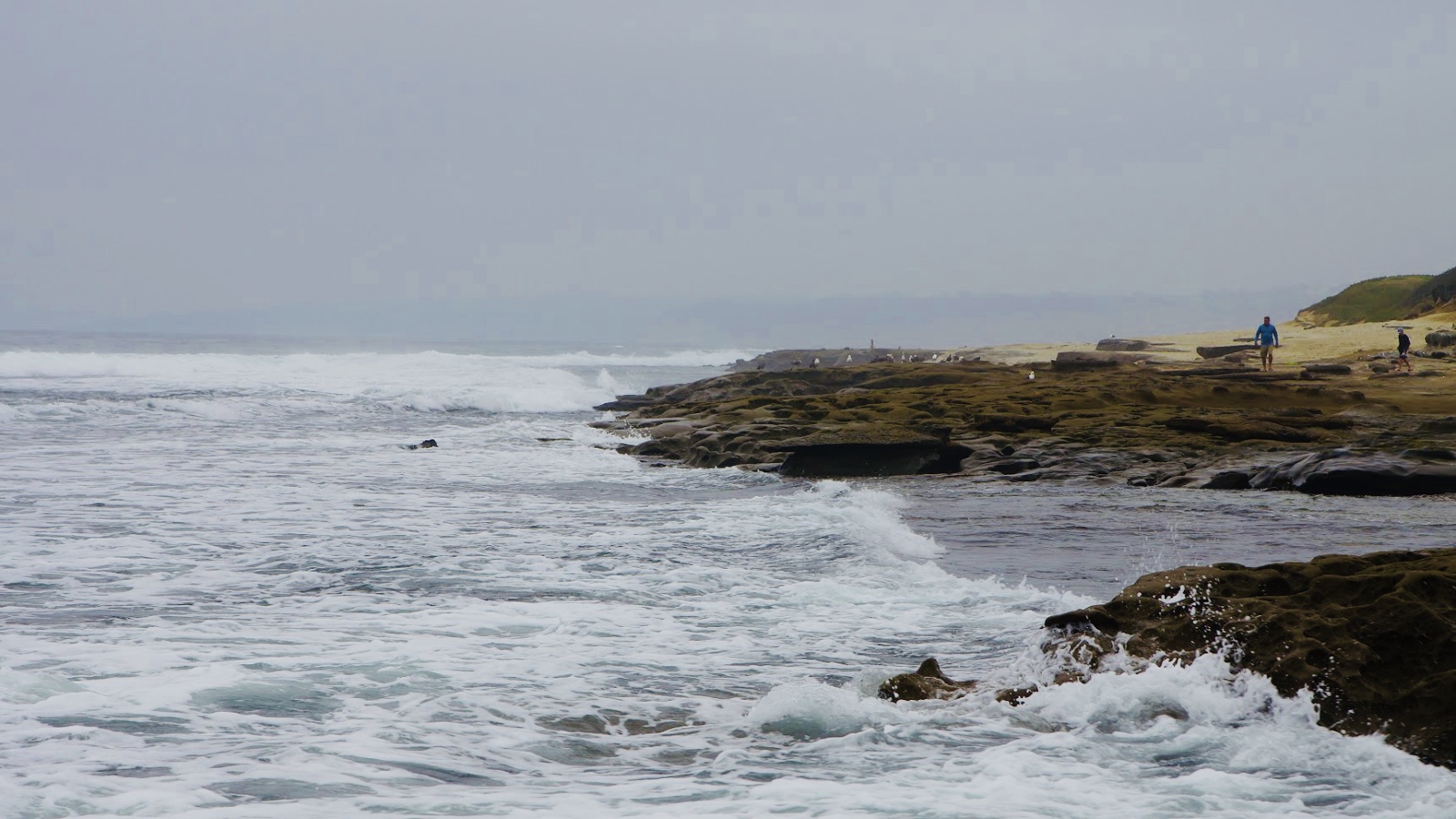
However, before you can begin going out to these tide pools, there are some rules that you must keep in your mind at all times. The first rule is to never turn your back to the ocean. Ocean waves are a lot more powerful than many people think. A surprisingly powerful wave may come up at any time and knock you off of your feet. Even we were surprised when a huge wave nearly reached us despite how far away from the coastline we were. The second rule is to be wary of dark/smooth rocks and any algae growing on them as these are very slippery and can cause you to lose your footing (Our photographer slipped on the rocks while we were looking around the pools). Third; if you are turning over a rock or stone, be sure to only turn it over halfway and replace it afterward as you found it. Finally, be sure to return any animal you might find back to where you found it.
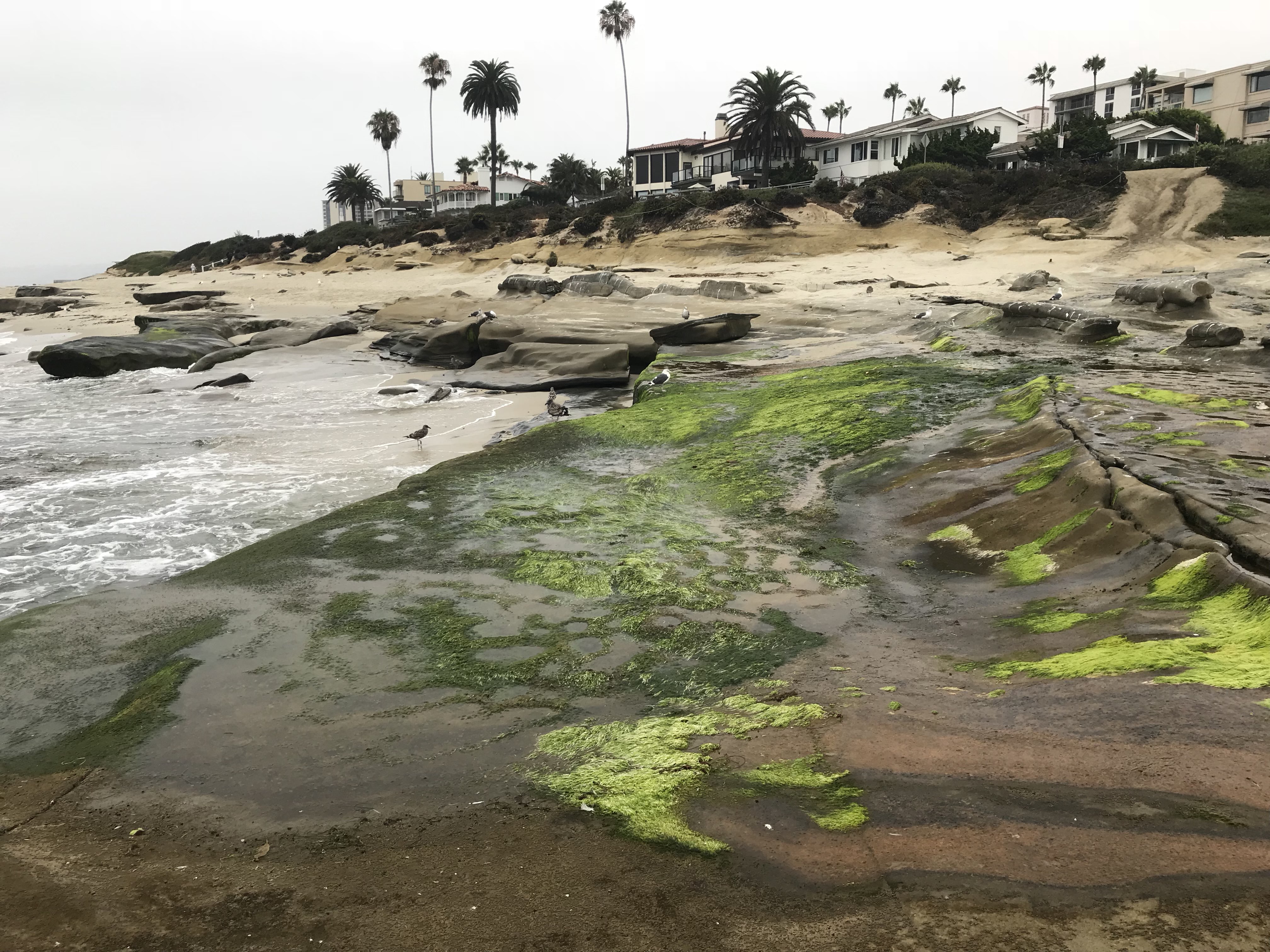
Some of the algae that should be avoided due to slipping.
There is no harm in trying to touch or hold these animals. Just be very gentle and careful when you do. Our lead developer lost his footing while trying to handle a hermit crab and ended up getting his sleeve and pants leg soaked!
The first thing we saw when we got there was the birds. They were everywhere on the tide pools wading in the tide pools and looking for food. These guys are surprisingly not very intimidated of humans as we got rather close to a couple of them before they began moving away.
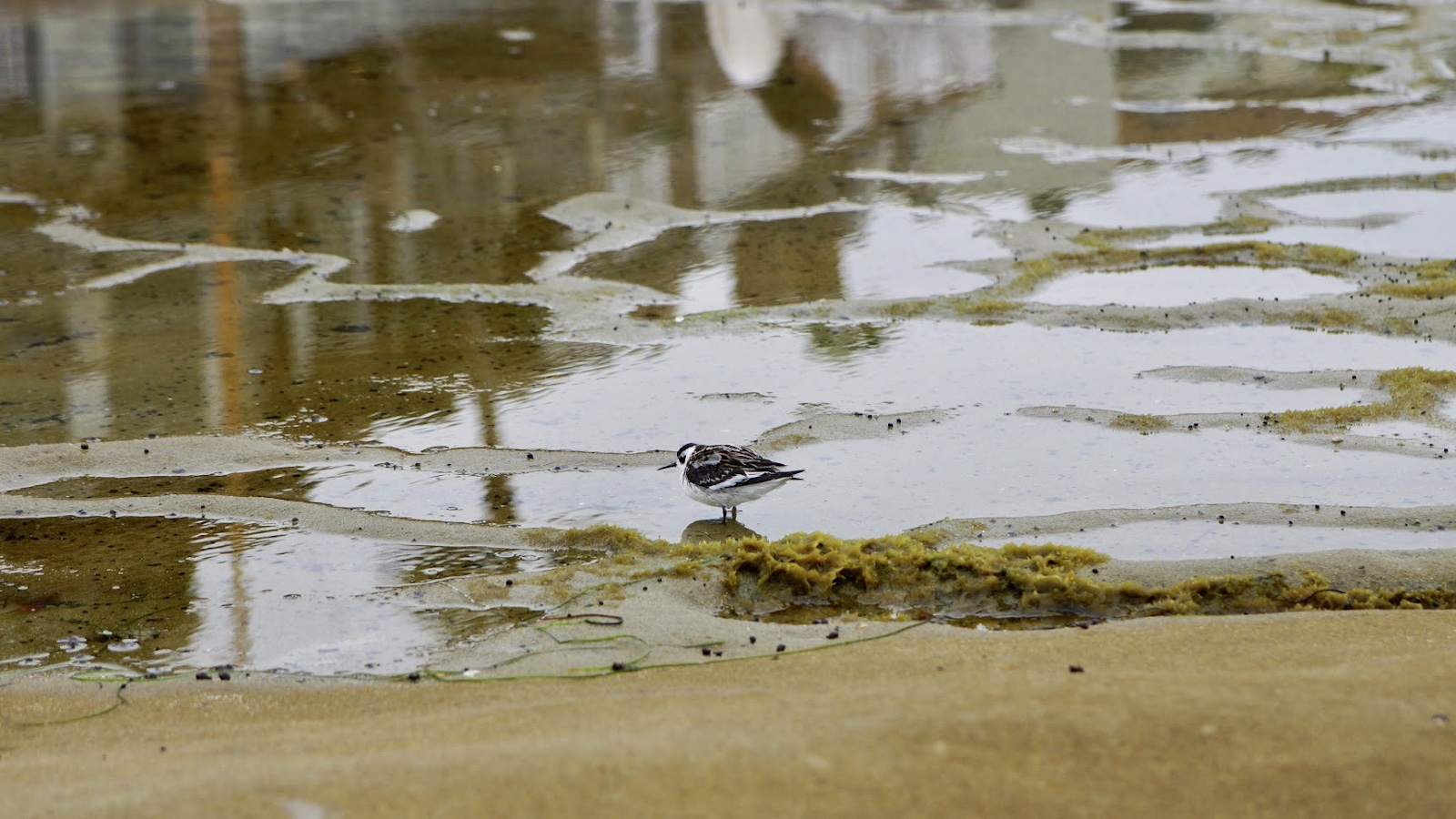
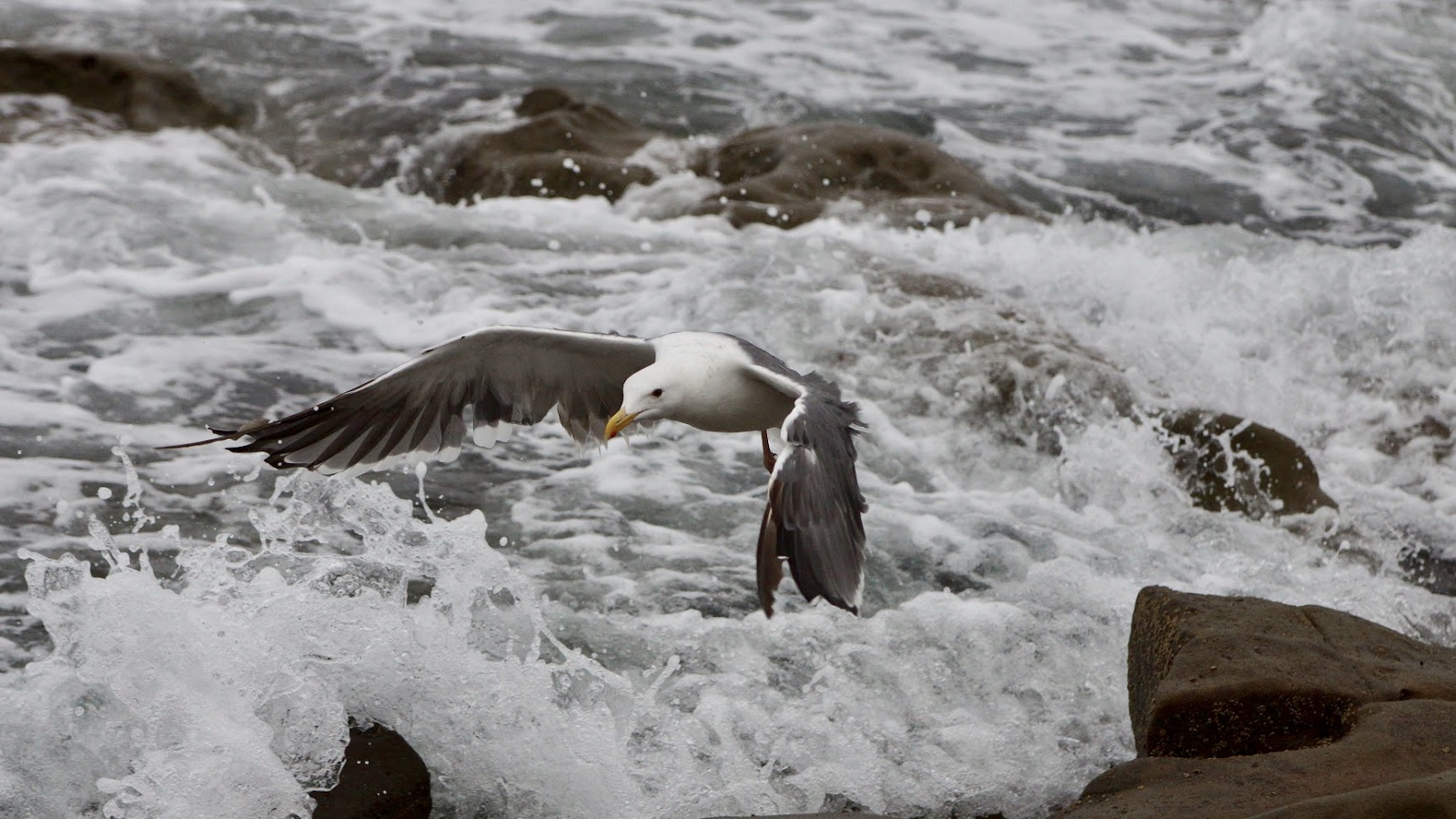
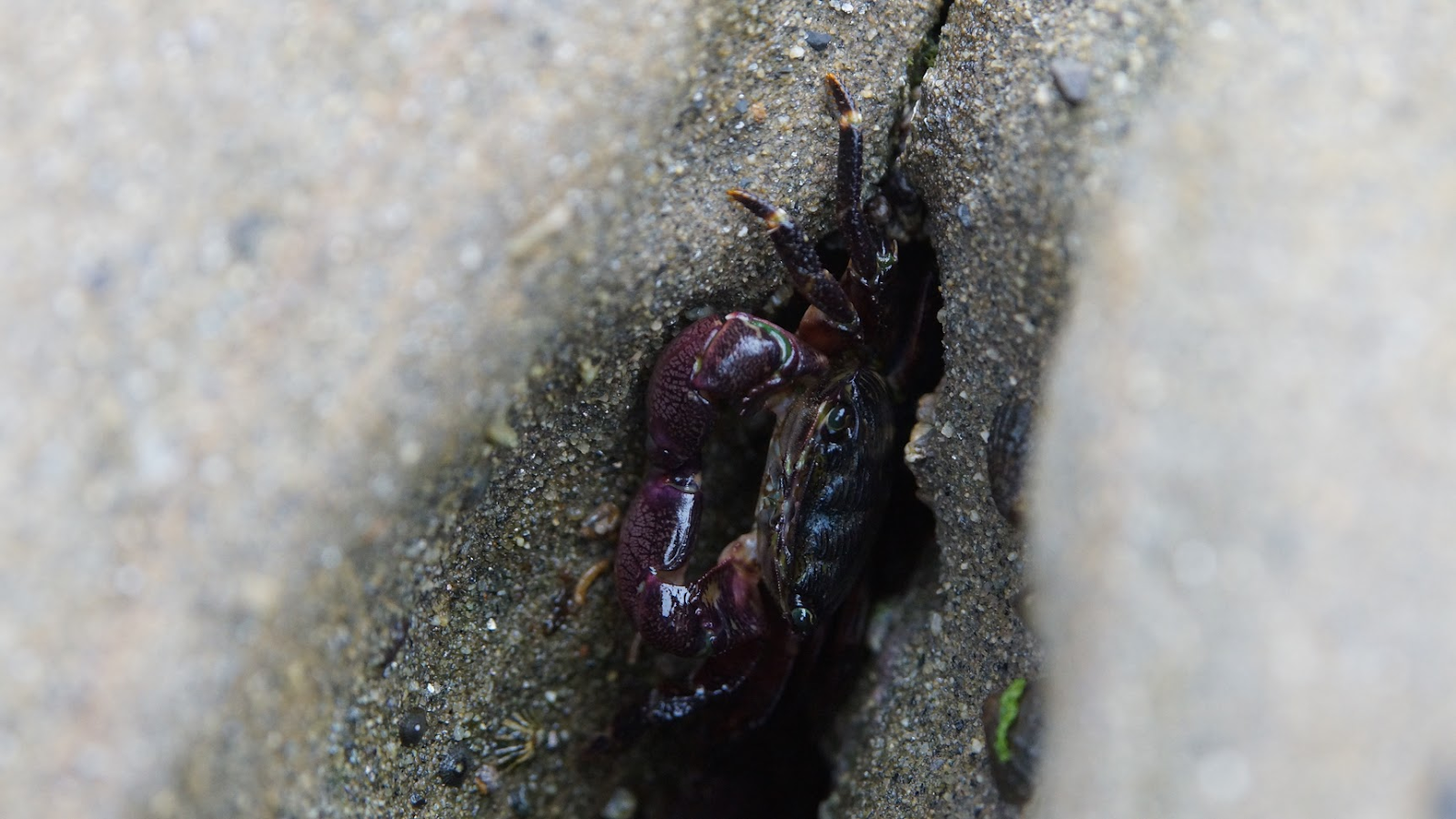
A rock crab we found.
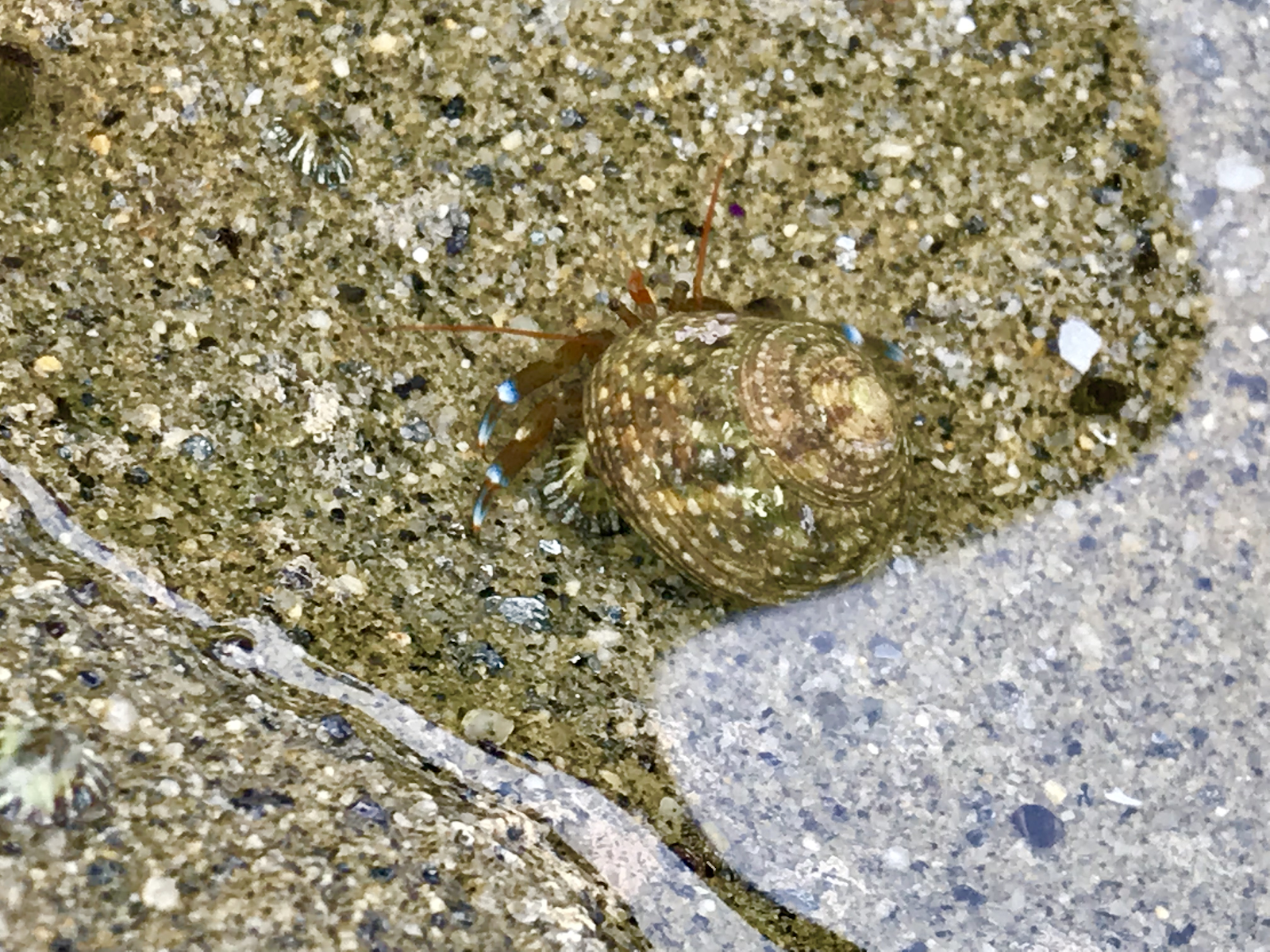
A rather large hermit crab we found
Another common species of animal we saw were sea anemones. These weird-looking creatures have a cylindrical body with tentacles sticking out around their mouths. Sea anemones use these tentacles to hunt and catch prey by shooting a small barb to the animal and injecting venom into it. No need to worry though, these barbs cannot pierce the thick skin of a human so you are free to touch the tentacles all you want. When I went to touch one of them they felt very sticky but other than that, there was no harm.
Alongside the sea anemones, we found many mussels, chitons, and clams in the tide pools. These three animals are protected by their hard shells and are rather easy to be spotted in the tide pools, with mussels tending to cling onto the sides of rocks while clams and chitons are usually found at the bottom of the pools. Mussels and clams actually have a rather interesting way of feeding where they filter water through their bodies to breathe while at the same time, collecting small food particles for consumption. Mussels and clams can spend up to half a day out of the water by closing their shells to make a watertight seal and breathe from the water that has already been collected inside. Chitons, on the other hand, graze off of the algae on the bottom of the tide pools, becoming more active as the tide increases.
For a place that contains ocean creatures, there is surprisingly very little fish. We found only two different species of fish being the Opaleyes and Sculpins. The Opaleyes are actually juvenile as they live in the tide pool areas until they are large enough to head to the kelp forests off the coast. They feed on algae and invertebrates, such as small crabs in the tide pool area. The Sculpins are the other species of fish that we found in the tide pools. These small fish will eat anything that they can find in the area. These two fish tend to swim under rocks to hide when you approach, so be ready with your camera if you want a picture or video as we kept scaring them away and had to return several times to try and capture some of them on film.
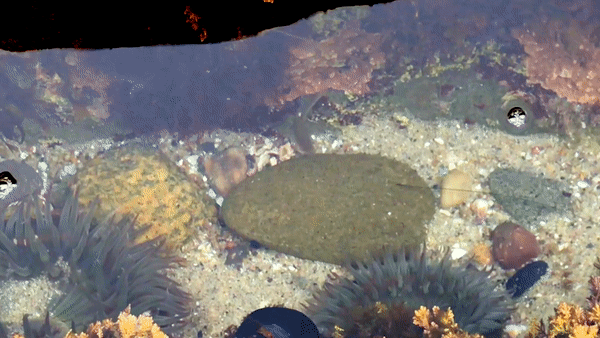
A young Opaleye we found.
Tide pools are an excellent place to visit no matter the season in San Diego. It is an amazing and fun experience no matter if you are a local or visiting from somewhere else. You’ll never know what you’ll find!
CONTACT
Questions or requests? Drop us a message!
Phone: N/A
Email: AoiChikyuuTravel@gmail.com
